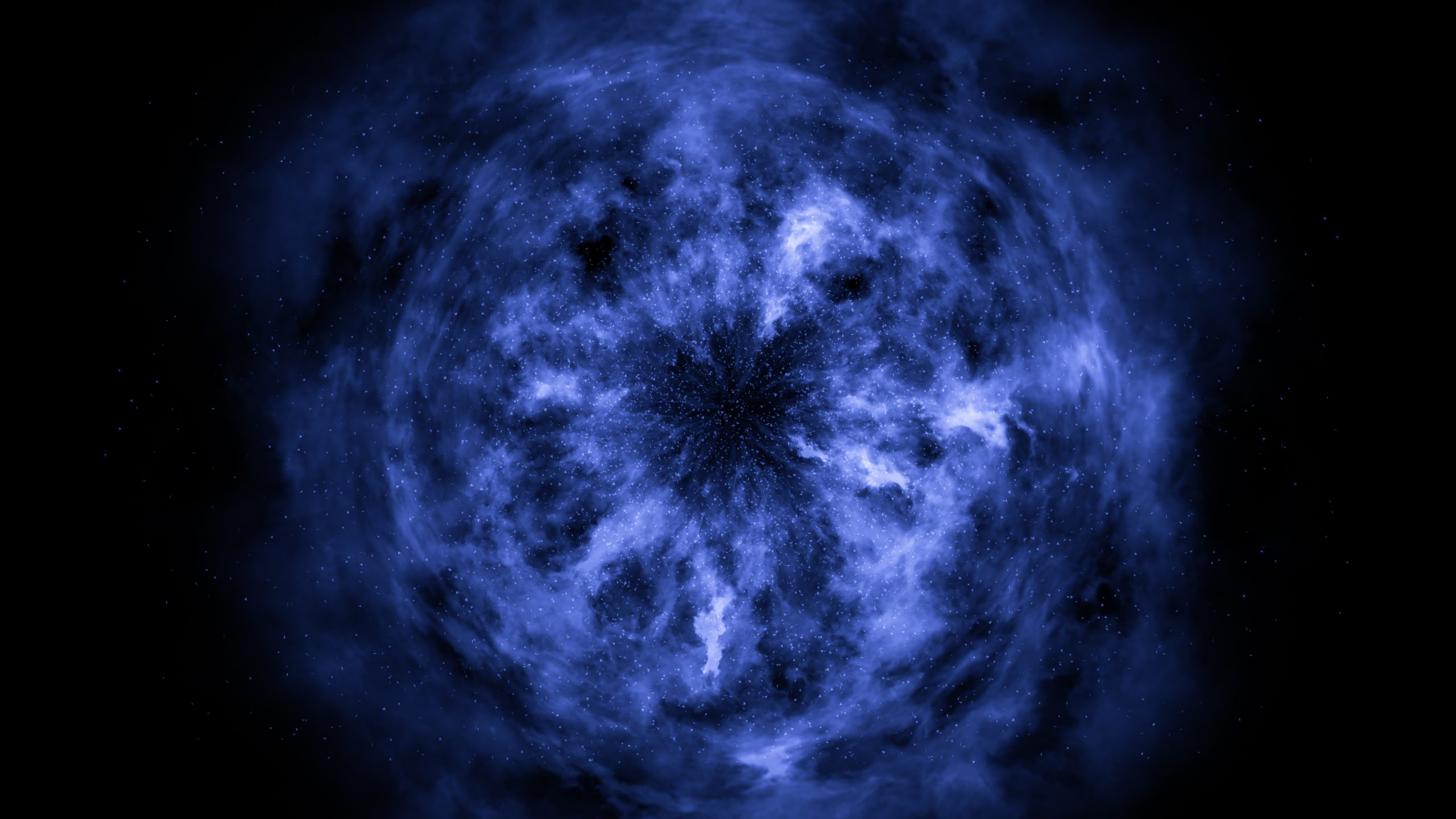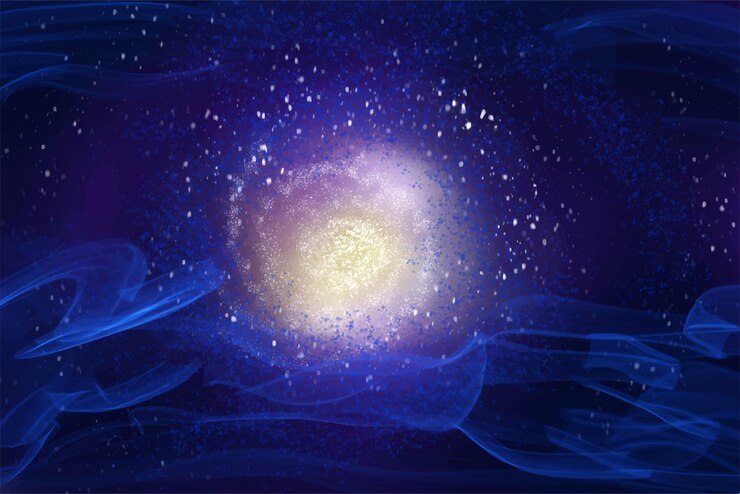Imagine a cosmic puppeteer, invisible yet all-powerful, sculpting galaxies and bending the fabric of spacetime—yet leaving no trace. This is dark matter, the universe’s enigmatic architect.
Making up 27% of the cosmos, it’s five times more abundant than ordinary matter. But what is it? And why does it evade every tool we’ve built to catch it? Let’s dive into the shadows.
What Is Dark Matter?
Dark matter is the universe’s ultimate ghost:
- Invisible: Doesn’t emit, absorb, or reflect light.
- Powerful: Its gravity holds galaxies together, preventing stars from flying into the void.
- Mysterious: Detected only by its gravitational fingerprints—like a burglar who leaves no footprints but steals the stars.
Evidence: How We Know the Ghost Exists
1. Galaxy Rotation Curves
Stars at the edges of galaxies spin too fast for the visible matter to hold them. Think of a carousel spinning so wildly the horses should fly off—but invisible ropes (dark matter) keep them tethered.
2. Gravitational Lensing
Massive galaxy clusters bend light from distant objects like cosmic magnifying glasses. The problem? There’s not enough visible mass to do the bending. Cue dark matter.
3. Cosmic Microwave Background (CMB)
Patterns in the Big Bang’s afterglow reveal dark matter’s role in clumping matter into galaxies.
4. Cosmic Web
The universe’s large-scale structure—filaments and voids—mirrors dark matter’s gravitational blueprint.
Theories: What Is This Cosmic Phantom?
1. WIMPs (Weakly Interacting Massive Particles)
- The MVP: Hypothetical heavy particles that interact via gravity and the weak force.
- The Catch: Decades of searches (like LUX and XENON1T) have found… nothing.
2. Axions
- Featherlight particles, billions of times lighter than electrons.
- Bonus: Could also solve a quantum puzzle (the Strong CP Problem).
3. MACHOs (Massive Compact Halo Objects)
- Dead stars, black holes, or rogue planets.
- Problem: Observations rule out enough MACHOs to explain dark matter.
4. Modified Gravity (MOND)
- Maybe Newton and Einstein were wrong? Tweaking gravity’s laws could erase the need for dark matter.
- Controversy: Fails to explain all cosmic clues (like the CMB).
The Hunt: Chasing Shadows
- Underground Labs: Facilities like LUX and XENON1T use vats of liquid xenon to catch rare dark matter collisions. Imagine waiting for a ghost to bump into a wall.
- Space Telescopes: Fermi Gamma-Ray hunts for gamma rays from dark matter annihilations.
- Atom Smashers: The Large Hadron Collider slams protons to spark dark matter particles (still no luck).
- Sky Surveys: Projects like DESI map millions of galaxies to trace dark matter’s gravitational web.
Philosophical Head-Scratchers
- What’s Reality Made Of? 95% of the universe is dark matter + dark energy. Are we just bit players in an invisible drama?
- The “Dark” Universe: If most of reality is hidden, does science have blind spots we can’t even imagine?
- Cosmic Destiny: Dark matter’s gravity could decide if the universe ends in a Big Crunch or eternal expansion.
FAQ: Your Dark Matter Dilemmas, Solved
Q: Can I touch dark matter?
A: Nope. Trillions pass through you every second, but they’re too shy to interact.
Q: Could dark matter kill us?
A: Unlikely. But a dense “dark matter hurricane” might tickle particle detectors.
Q: How do we know it’s not just bad math?
A: Too many independent clues (galaxies, CMB, lensing) point to the same ghost.
Final Thoughts: The Universe’s Greatest Magic Trick
Dark matter is the ultimate cosmic tease: everywhere, yet nowhere. It’s a reminder that the universe loves a good mystery—and that the biggest discoveries might be hiding in plain sight.
As physicist Vera Rubin (who confirmed dark matter) once said, “We’re out of kindergarten, but only in about third grade when it comes to understanding the universe.”
What do you think?
Is dark matter a particle, a gravity glitch, or something stranger? Share your theories below—and for more cosmic riddles, explore The Consciousness Grid: Is the Universe a Living Network?.
Subscribe for more journeys to the edge of science!
Disclaimer: Dark matter remains hypothetical, with no direct detection confirmed. Theories discussed are based on active scientific research.




